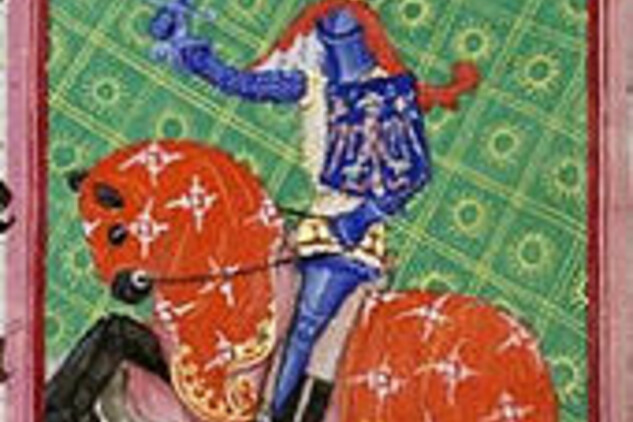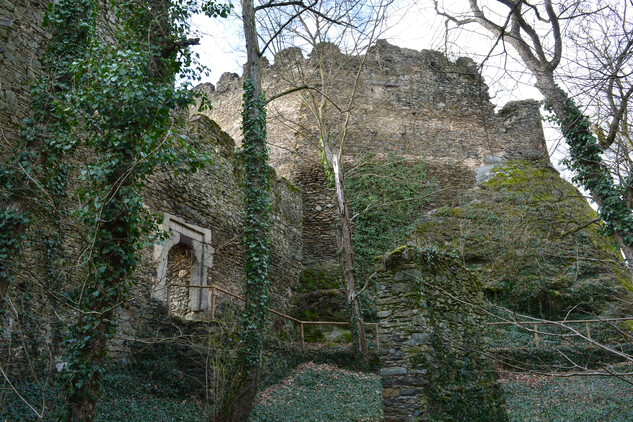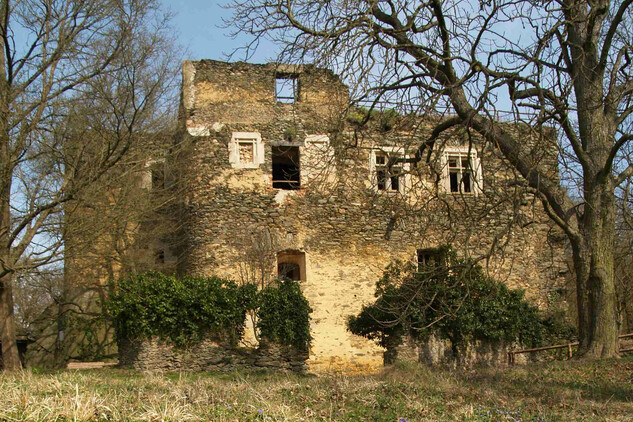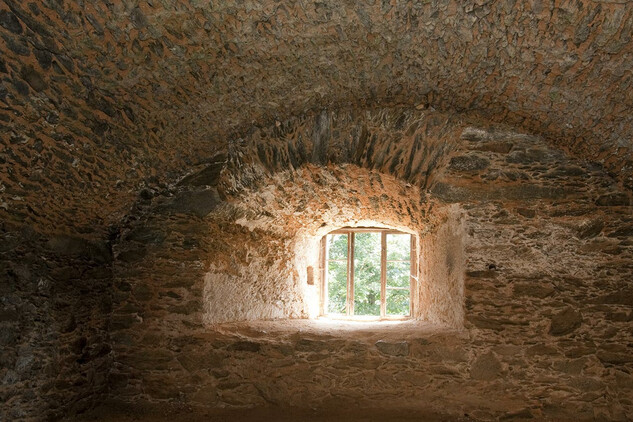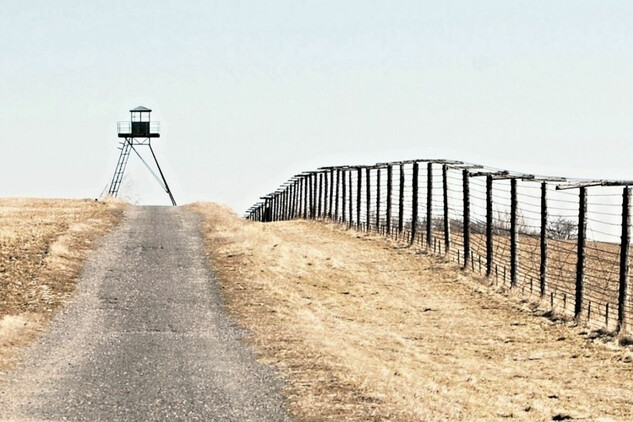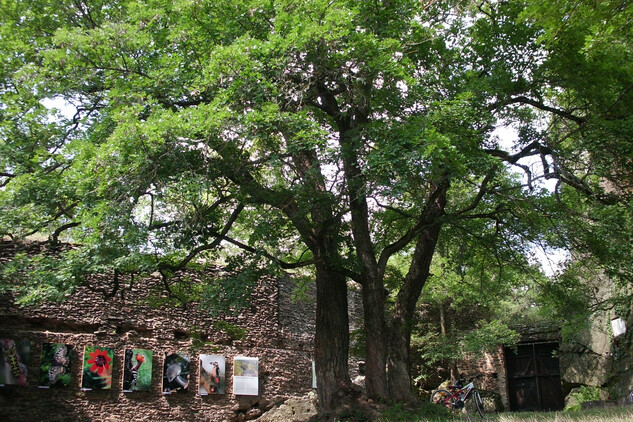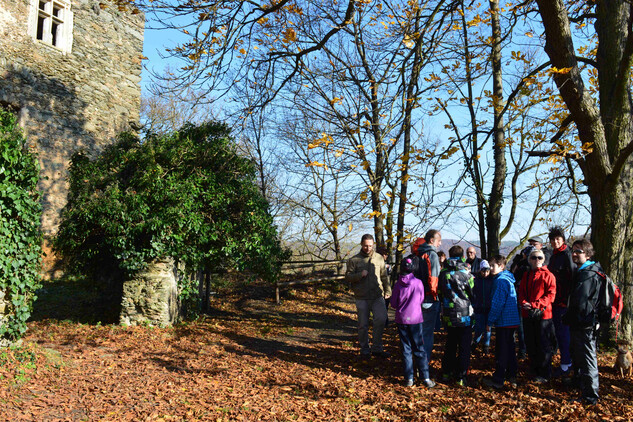Please note that payment of the entrance fee to the castle is only possible in cash. Thank you for understanding.
History
Building development, owners and landscape
Right by the river Dyje, which created one of the axes of the prehistoric colonisation, the first inhabitants came to settle in the Nový Hrádek area. That was in the latter Stone Age, which was around the 6th century BC. This fact is supported by the favourable conditions offered by the terrain inside the great river meander, as well as by some accidental findings of stone industries. The ancient settlement, where the so-called people of painted ceramics lived some six thousand years ago, was discovered at the edge of today’s forest – at a site known as Příčky.
For the Nový Hrádek area, which was covered with dense forest back then, the so-called Lower Trail had a great importance. This trail followed the course of Dyje, and continued further inland. Trade caravans travelled there, which provided for the exchange of products, and it was also favoured by the ancient nations that passed through there, and temporarily settled on the banks of the river – the Celts, the Germans, and from the 6th century also the Slavs.
The first historically proven owners of this territory were the Premonstratensian monks from the Louka monastery in Znojmo, who exchanged it with the Moravian Margrave John Henry von Luxembourg in 1358. He was the one who established – on the narrowest place of the rocky stripe, perched some 80 metres high above the level of Dyje – the so-called Lower Castle as a fortified settlement used for his occasional hunting outings. The lower moat wall has been preserved to this day, with its unique inner oval wall that is up to three metres thick in some places. Gradually this wall was extended to the height of thirteen metres.
His son Jošt of Moravia, who later became a Roman and German king, left the new castle to his supporter Přech of Kojetice in 1403. After him, the Austrian family of the Eitzingers owned Nový Hrádek from around 1420, and they also held the castle Kaja on the opposite bank of Dyje. During their rule, the castle was substantially reconstructed to withstand the Hussite wars in the 15th century.
At that time, the original residential palace of the Margrave was pulled down, and replaced with a simple double room structure with beam ceilings. Another two storey building with a shed roof was added to the western end of the enclosed courtyard, and two other structures were built in the eastern part of the complex – nowadays they are almost non-recognisable. The Eitzingers have reinforced the fortifications by adding a front wall to the so-called Side Castle, which had small loophole openings, and was attached to a high prismatic tower on the southern end of the moat. The entrance to the tower was on the ground floor and on the first floor of a new building that probably served as palace, from which the rampart wall continued in the western direction towards the outer shell wall surrounding the core.
All that did not satisfy the Eitzingers. In the east end they built a massive semi-cylindrical tower around 1438, which was to protect the entrance to the outer area of the castle. The wall continued from this tower, and protected the southern side of today’s large courtyard, where, in the lower part, a new fortification building was added close to the moat. Today, this building is almost ruined. The access road to the castle continued through a wooden bridge resting on two stone pillars, and connected to the entrance portal of the Side Castle.
In the third quarter of the 15th century the development of the castle was more or less completed by the last larger construction event. In the eastern outer part of the castle, the semi-circular tower was reconstructed, which until then opened inwards. The builders have added two three-level wings on the northern and western sides, creating the new castle palace. This is how a separate layout was established with the miniature rectangular courtyard of today’s so-called Upper Castle.
In the 16th century, this reconstructed aristocratic seat changed hands between several owners during a relatively short period of time. They were the Lords of Bačkovice and their relatives from Kunštát, who added more fortification measures on the northern side – a massive wall and a bastion with loopholes. After them, the dominion was bought and owned by the Krajíř, Čertorejský, Dietrichstein, Berka of Dubá, and Strein families. In 1617, for the first time the castle became the property of the Vranov owners – the Althanns, who joined both dominions into a single one for several centuries.
In the 17th century during the rule of the Scherfenbergs, the terror of the Thirty Years’ War reached Nový Hrádek. The surrounding villages were plundered, and the insufficiently protected castle was – for unknown reasons – taken and partially demolished by the Swedish army lead by General Torstenson in 1645.
Since then, the military importance of the castle has been only marginal. The damaged parts were not renovated – surely due to the lack of financial resources that the owners invested greatly in the reconstruction of their home in Vranov, and also because of the general change of lifestyle and attitude towards living in a cold stone castle situated deep in the forest off the main roads. The aristocracy abandoned the castle altogether, but the Althanns regained their Vranov and Nový Hrádek dominions again in 1680, and held it until the end of the 18th century. Some of the buildings that were preserved were still used in some way – as a temporary retreat or storage for the extensive aristocratic farmsteads situated in the nearby Lukov.
In 1799, Nový Hrádek received a new owner – the Polish count Stanislav von Mniszek, who reconstructed one of the older buildings in the large courtyard (probably in 1800), and later established a storage and sales department for the stoneware produced in his factory in Vranov. Following the romantic fashion of his period, he also reconstructed the Upper Castle, and adjusted it for short-term outings and hunting events he liked to hold with his family and guests. His daughter and heiress Luitgarde of Stadnice later continued with these activities, and in the second half of the 19th century she ordered the extension and reinforcement of the garden terraces on the south-eastern slope.
The great-grandson of Stanislav Mniszek, Adam Zbynek Leon of Stadnice, lost the ruin through confiscation during a land reform in the 1920’s. It was rented out to the Czech Tourist Club which opened the ruin to the public and established a youth hostel with twenty beds there. During World War II, the front part of the hostel became year-round accommodation for a group of Polish women who were forced to work in the forest and at German farms in Lukov. The hunter’s lodge on the first courtyard was turned into a pub for tourists.
In early 1950’s, shortly after the communist putsch, Nový Hrádek became surrounded by the strictly guarded border zone, which was accessible only to the frontier guard troops. Only after the so-called Velvet Revolution in 1989, was the public allowed to enter the previously strictly observed Podyjí, as well as the ruin itself.
Because for forty years there were no human activities or interferences within the ruin, it fell into serious disrepair. On the other hand, this paradoxically saved it from modern devastation or any improper reconstruction measures. While people were absent, nature had absolute freedom to develop all its processes. The result is the merging of natural features with the medieval architecture of the castle. The final combination of man-made and natural phenomena gives Nový Hrádek the authentic look of an ancient seat, which nowadays also represents an incredibly valuable landscape feature located within the first, the most strictly protected zone of the Podyjí National Park
The natural, as well as the historic and architectural values of the castle are really outstanding. They were also recognised by the Czech government, which declared Nový Hrádek, together with the Vranov State Chateau, a National Cultural Monument in 2002. By this measure, the supreme executive body of the state expressed the statement that Nový Hrádek represents a valuable source of material culture, and that it belongs to the group of monuments representing the most important part of the nation’s cultural heritage.

